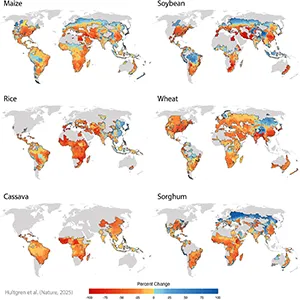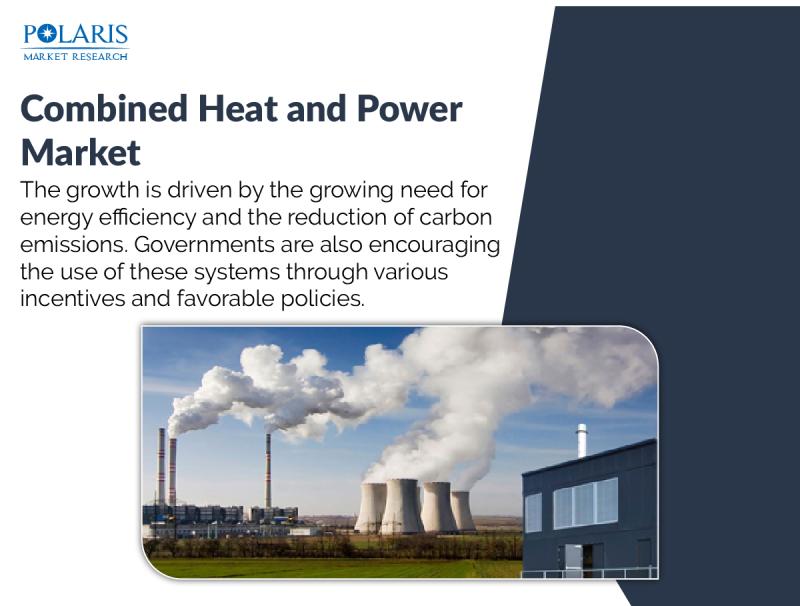Most warming this century may be due to air pollution cuts – New Scientist

Report on the Climatic Impact of Reduced Sulphate Aerosol Pollution and its Relation to Sustainable Development Goals
Introduction: The Interplay Between Air Quality and Climate Action
Recent analysis indicates that a significant portion of global warming observed since 2001 may be attributed to the successful reduction of sulphate (SO2) air pollution. This development highlights a complex interplay between key United Nations Sustainable Development Goals (SDGs), particularly the trade-offs between improving public health (SDG 3) and combating climate change (SDG 13). While efforts to reduce harmful emissions have advanced goals related to health and clean energy, they have had an unintended consequence of reducing cloud reflectivity, thereby accelerating planetary warming.
Key Findings on Atmospheric Warming and Albedo Change
Quantifying the Impact of Reduced SO2 Emissions
Research conducted at the University of Exeter suggests that reductions in SO2 pollution are a primary driver of the planet’s decreased albedo (reflectivity). The key findings include:
- An estimated two-thirds of the global warming trend since 2001 is potentially attributable to the reduction in SO2, rather than solely to increases in CO2.
- The mechanism involves clouds becoming darker and less reflective as sulphate aerosol concentrations decline. Sulphate pollution from industrial sources and shipping historically increased the density of cloud droplets, making them brighter.
- This phenomenon of reduced cloud brightness directly contributes to additional warming, as more solar radiation is absorbed by the Earth system.
Data and Corroborating Evidence
The conclusions are based on an analysis of satellite data from the Clouds and the Earth’s Radiant Energy System (CERES) instruments, spanning from 2001 to 2019. The study identified a strong correlation between geographical areas with falling SO2 pollution levels and areas exhibiting a decline in cloud brightness. This finding supports the hypothesis that cleaner air is a major factor in the recently observed acceleration of warming.
Implications for Sustainable Development Goals (SDGs)
Progress and Challenges Across Multiple Goals
The reduction of sulphate pollution represents a significant achievement for several SDGs, yet it simultaneously creates challenges for others. This dynamic underscores the need for an integrated policy approach.
- SDG 3: Good Health and Well-being: The reduction of SO2 is a major public health victory, directly contributing to Target 3.9, which aims to substantially reduce the number of deaths and illnesses from hazardous chemicals and air pollution.
- SDG 7: Affordable and Clean Energy: The move away from high-sulphur fuels like coal is a central component of the transition to cleaner energy systems, aligning with the objectives of SDG 7.
- SDG 11: Sustainable Cities and Communities: Reduced industrial and transport emissions improve urban air quality, advancing Target 11.6 to reduce the adverse per capita environmental impact of cities.
- SDG 13: Climate Action: The unintended warming effect poses a significant short-term challenge to achieving the goals of the Paris Agreement. It demonstrates that addressing one environmental issue can exacerbate another, complicating climate mitigation strategies.
Re-evaluating Climate Sensitivity
A positive implication of this research is that the accelerated warming may not indicate that the Earth’s climate sensitivity to CO2 is higher than previously estimated. The warming effect from reduced aerosol pollution is expected to be a temporary phenomenon. This reinforces the critical importance of focusing on the long-term driver of climate change: greenhouse gas emissions, as mandated by SDG 13.
Scientific Context and Ongoing Debate
Alternative Explanations and Research Considerations
While the findings are compelling, the scientific community continues to debate the precise drivers of the planet’s falling albedo. Key considerations include:
- Some recent studies propose that the primary cause of the darkening trend is a reduction in overall cloud cover, rather than a change in the intrinsic brightness of clouds.
- The datasets used for SO2 pollution have been updated since the initial analysis was performed, which may require a re-evaluation of the findings.
- The topic remains an area of active research, with a consensus forming that reduced air pollution is a significant, if not primary, driver of recent accelerated warming.
Conclusion: The Need for Integrated Policy
The success in curbing sulphate pollution exemplifies progress towards vital SDGs related to health, energy, and sustainable cities. However, the resulting temporary acceleration in global warming complicates the urgent mission of SDG 13. This report concludes that policy-making must adopt an integrated framework that acknowledges the interconnectedness of the SDGs. To counteract the warming side effect of cleaner air, global efforts to reduce greenhouse gas emissions must be intensified to ensure long-term climate stability.
1. Which SDGs are addressed or connected to the issues highlighted in the article?
-
SDG 13: Climate Action
- The article is fundamentally about climate change, discussing “global warming”, the “greenhouse effect”, rising “carbon dioxide levels”, and the planet’s “albedo”. It directly addresses the complexities of climate drivers, stating that “Two-thirds of the global warming since 2001 is SO2 reduction rather than CO2 increases.”
-
SDG 3: Good Health and Well-being
- The article discusses the reduction of “sulphate air pollution”. While focusing on the climatic side effects, the reduction of air pollution is a primary goal for improving public health and reducing illnesses.
-
SDG 7: Affordable and Clean Energy
- The source of the pollution is linked to energy production. The article notes that sulphate pollution comes from “coal power plants” and that emissions have been reduced by “moving away from high-sulphur fuels such as coal,” which points directly to a transition in energy sources.
-
SDG 9: Industry, Innovation and Infrastructure
- The article identifies “industry and ships” as sources of sulphate pollution. The reduction of these emissions implies upgrades and changes in industrial processes and infrastructure to make them cleaner and more sustainable.
-
SDG 14: Life Below Water
- The article mentions pollution from “ships” and the concept of “marine cloud brightening”. Reducing pollution from shipping is a key aspect of protecting marine ecosystems from air and water pollution.
2. What specific targets under those SDGs can be identified based on the article’s content?
-
SDG 13: Climate Action
- Target 13.2: Integrate climate change measures into national policies, strategies and planning. The article’s findings on the dual impact of pollution control (positive for health, negative for short-term warming) are critical for developing integrated policies that address both air quality and climate change.
-
SDG 3: Good Health and Well-being
- Target 3.9: By 2030, substantially reduce the number of deaths and illnesses from hazardous chemicals and air, water and soil pollution and contamination. The article is premised on the successful reduction of “sulphate air pollution,” which directly contributes to this target.
-
SDG 7: Affordable and Clean Energy
- Target 7.2: By 2030, increase substantially the share of renewable energy in the global energy mix. The mention of “moving away from high-sulphur fuels such as coal” aligns with the goal of transitioning to cleaner energy sources.
-
SDG 9: Industry, Innovation and Infrastructure
- Target 9.4: By 2030, upgrade infrastructure and retrofit industries to make them sustainable, with enhanced resource-use efficiency and greater adoption of clean and environmentally sound technologies and industrial processes. The reduction of sulphate pollution from “industry and ships” is a direct result of actions related to this target.
-
SDG 14: Life Below Water
- Target 14.1: By 2030, prevent and significantly reduce marine pollution of all kinds. The reduction of emissions from “ships” contributes directly to lessening the environmental impact on marine environments.
3. Are there any indicators mentioned or implied in the article that can be used to measure progress towards the identified targets?
-
Indicators for Climate Change (SDG 13)
- Earth’s Albedo: The article explicitly mentions that “satellite instruments called CERES have been directly measuring how much sunlight is reflected versus how much is absorbed,” which is a direct measurement of the planet’s albedo. The finding is that the planet’s albedo is “falling”.
- Rate of Global Warming: The article discusses the “rapid warming in recent years” and the “acceleration in global warming,” which can be measured as the change in global average temperature over time.
- Atmospheric CO2 Concentration: The article refers to “rising carbon dioxide levels” as a primary driver of the greenhouse effect, a standard indicator for climate change.
-
Indicators for Pollution (SDG 3, 9, 14)
- Sulphur Dioxide (SO2) Emission Levels: The central theme is the effect of “falling levels of SO2 pollution.” The analysis in the article “looked at whether the decline in cloud brightness corresponded with areas with falling levels of SO2 pollution.” This is a direct indicator.
-
Indicators for Clean Energy (SDG 7)
- Share of Fossil Fuels in Energy Mix: The article implies a change in the energy mix by mentioning the move “away from high-sulphur fuels such as coal.” A reduction in the percentage of coal used for energy would be a key indicator.
4. Table of SDGs, Targets, and Indicators
| SDGs | Targets | Indicators |
|---|---|---|
| SDG 13: Climate Action | 13.2: Integrate climate change measures into national policies, strategies and planning. |
|
| SDG 3: Good Health and Well-being | 3.9: Substantially reduce deaths and illnesses from hazardous chemicals and air pollution. |
|
| SDG 7: Affordable and Clean Energy | 7.2: Increase substantially the share of renewable energy in the global energy mix. |
|
| SDG 9: Industry, Innovation and Infrastructure | 9.4: Upgrade infrastructure and retrofit industries to make them sustainable. |
|
| SDG 14: Life Below Water | 14.1: Prevent and significantly reduce marine pollution of all kinds. |
|
Source: newscientist.com

What is Your Reaction?
 Like
0
Like
0
 Dislike
0
Dislike
0
 Love
0
Love
0
 Funny
0
Funny
0
 Angry
0
Angry
0
 Sad
0
Sad
0
 Wow
0
Wow
0





































![Lancaster homeowner’s energy-efficient renovation sparks clash over historic preservation [Lancaster Watchdog] – LancasterOnline](https://bloximages.newyork1.vip.townnews.com/lancasteronline.com/content/tncms/assets/v3/editorial/9/ed/9ed03d32-c902-44d2-a461-78ad888eec38/69050b156baeb.image.png?resize=150,75#)









































